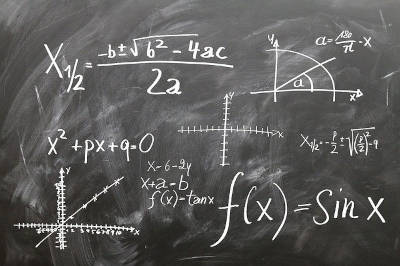Registering scientific papers
Fact sheet P-32
Issued: 4th March 2021 Last amended: 20th February 2023
Fact sheet P-32: Copyright registration of scientific papers, journals and articles
The need for evidence of creation

As with all literary works, copyright will exist in scientific documents from the date that they are first written. It can however be hard to establish solid evidence of the date of your discoveries, theories, observations, etc., particularly if your research is still in progress and is not yet ready to be published.
Often there will be several separate parties working at a problem from different angles, building on the research and results of others. In this situation it can be hard to determine whose work was first, who deserves credit and, of course, in all fields of life there are unscrupulous individuals who are prepared to copy the work of others and pass it off as their own creation.
Registration can help
Copyright registration can help to avoid at least some of this potential conflict. Lodging a copy of your work with Copyright Witness establishes an independently verifiable tamper proof evidence record in your name of the exact content of your work as it existed at the point of registration. This is solid evidence of your prior claim on the work and can be produced as evidence to help resolve matters if your rights to the work are disputed.
Copyright Witness registrations are also flexible enough to allow you to continue developing your work and record additional evidence deposits as your project progresses. You can, for example, register a work in the early stages to ensure it is protected before others have a chance to see your work, and then add new versions of the work using our update facility as your project develops. As each deposit (the initial registration and any update submissions) is treated as a separate item of evidence, with its own date and chain of custody, this means you can actually build up a verifiable record of how your work has evolved over time, which is very strong evidence of your claim.
Attribution and authorship
Typically with literary works the person that wrote the work will, (at least in the first instance), be the copyright owner of the work, and is attributed as the author. In the scientific community, where collaboration and group endeavour is common, attribution can be more complex and can also be separate from the copyright ownership (e.g. an institution could be the copyright owner, but the work is attributed to several authors).
Attribution can also be important to the credibility of a individual; particular for an up and coming scientist or student, as it may impact on future career opportunities.
Joint authorship

Stating authorship by contribution – general conventions to follow.
Unfortunately, there is not a definitive standard for determining who is an author of a scientific document, but many tend to follow the criteria that to be listed as an author, the person must have had:
- significant involvement in study, conception, design, data collection, or analysis;
- involvement in drafting or revising manuscript;
- approval of final version of manuscript for publication; and
- responsibility for accuracy and integrity of the research.
In terms of order of authors, this will vary depending on the field of study.
Most commonly, the principal contributor is the first author listed, followed by other contributors in order of their importance and input to the project. Some fields, particularly core sciences such as biology, tend to place the principal author at the end of the list. In maths and physics, or in projects with a lot of contributors, there is a tendency to list alphabetically.
Completing the form when there is multiple ownership.
When it comes to a copyright registration, the application form requires that you enter the name of the copyright owner (or owners) of the work. It is possible to list a handful of names here, but there is a character limit to what can be entered (as what is entered here is expected to appear on a certificate of fixed size).
If ownership is shared among many parties (too many to enter on the form), then you should enter either:
(a) a collective name for the group, or
(b) the principal owner’s name followed by “et al.”, “et alia” or “and others”.
In such cases, we would expect that a list of owners would be included either within the submitted document(s), or in a separate file included in the deposited evidence.
If copyright ownership and authorship is separate, then it is also acceptable to include a separate file listing the authors; although that is not necessary if this information is already included in the deposited materials.
How to register
Registration can be carried out either online or by postal application.
Online registration is cheaper and will provide immediate cover for your work.
During the online process you will be asked to upload the files that make up your work (e.g. Word documents, PDF, image files, etc.). As a general rule, scientific documents are ideal for online registration as they tend to consist of relatively few files and are not exceptionally large, but if you have a project that consists of a lot of files, or large amounts of data, you should check out our upload advice page.
Alternatively, you can use our postal service, and submit a postal application form including the copy of the work on a CD, DVD, Blu-Ray, USB drive, or as paper documents.
Dealing with changes to the work
If you are producing new documents (or other materials) over time as the project develops, or rewriting and revising existing materials, you can add this new or updated material to the registration using the update facility.
Although there is always a fee when new material is submitted, updates are charged at a reduced rate (currently 24.75 if submitted online). This works out far cheaper than submitting new versions as new registrations.
Because all the materials for the work/project are stored under a single registration number, the full dated history is available in one place, showing how the work has evolved over time. It also means that, if you wish cover to continue after the initial 5/10 year period, renewals are far cheaper as you only have one registration per project.
For full details of how the update facility operates, please see our fact sheet P-17: Updating Copyright Registrations.
